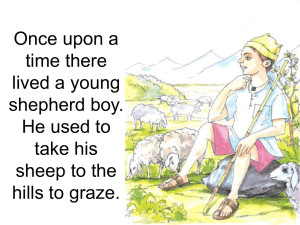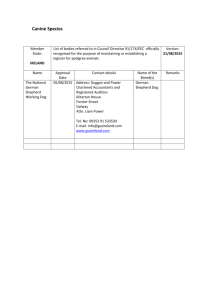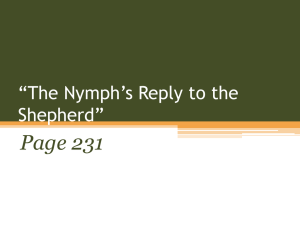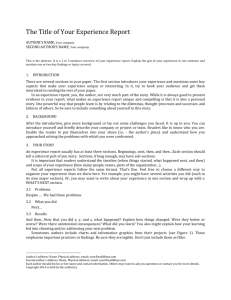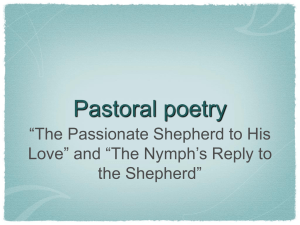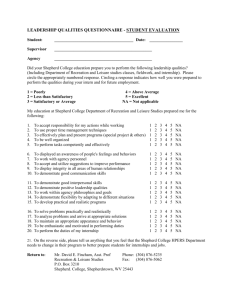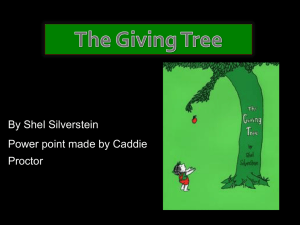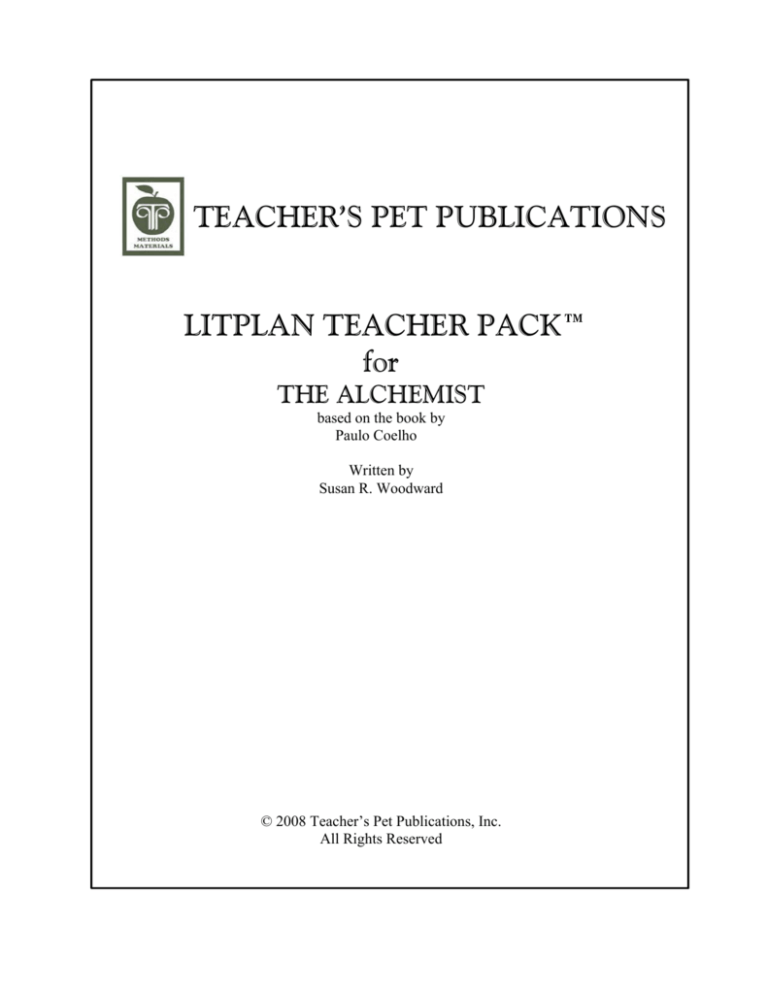
TEACHER’S PET PUBLICATIONS
LITPLAN TEACHER PACK™
for
THE ALCHEMIST
based on the book by
Paulo Coelho
Written by
Susan R. Woodward
© 2008 Teacher’s Pet Publications, Inc.
All Rights Reserved
Copyright Teacher's Pet Publications 2008
Only the student materials in this unit plan (such as worksheets,
study questions, and tests) may be reproduced multiple times
for use in the purchaser's classroom.
For any additional copyright questions,
contact Teacher's Pet Publications.
www.tpet.com
2 Copyright 2008 Teacher's Pet Publications, Inc.
TABLE OF CONTENTS - The Alchemist
Introduction
7
Unit Objectives
9
Reading Assignment Sheet
10
Unit Outline
11
Study Questions (Short Answer)
15
Quiz/Study Questions (Multiple Choice)
25
Pre-reading Vocabulary Worksheets
45
Lesson One (Introductory Lesson)
65
Non-fiction Assignment Sheet
87
Oral Reading Evaluation Form
80
Writing Assignment 1
82
Writing Assignment 2
91
Writing Assignment 3
108
Writing Evaluation Form
84
Vocabulary Review Activities
96
Extra Writing Assignments/Discussion ?s
100
Unit Review Activities
111
Unit Tests
117
Unit Resource Materials
179
Vocabulary Resource Materials
199
Copyright 2008 Teacher's Pet Publications, Inc. 3
4 This page is intentionally left blank for two-sided printing.
INTRODUCTION The Alchemist
This LitPlan has been designed to develop students' reading, writing, thinking, and language skills
through exercises and activities related to The Alchemist. It includes nineteen lessons, supported by
extra resource materials.
The introductory lesson invites students, through Langston Hughes's poem"A Dream Deferred,"
to contemplate what happens when dreams are put off. Students will also discuss the tale of
Narcissus from Greek mythology in preparation for understanding the novel's Prologue. Following
the introductory activity, students are given a transition to explain how the activity relates to the
book they are about to read. Following the transition, students are given the materials they will be
using during the unit. At the end of the lesson, students begin the pre-reading work for the first
reading assignment.
The reading assignments are approximately thirty pages each; some are a little shorter while others
are a little longer. Students have approximately 15 minutes of pre-reading work to do prior to each
reading assignment. This pre-reading work involves reviewing the study questions for the
assignment and doing some vocabulary work for selected vocabulary words they will encounter in
their reading.
The study guide questions are fact-based questions; students can find the answers to these questions
right in the text. These questions come in two formats: short answer or multiple choice. The best use
of these materials is probably to use the short answer version of the questions as study guides for
students (since answers will be more complete), and to use the multiple choice version for
occasional quizzes.
The vocabulary work is intended to enrich students' vocabularies as well as to aid in the students'
understanding of the book. Prior to each reading assignment, students will complete a two-part
worksheet for selected vocabulary words in the upcoming reading assignment. Part I focuses on
students' use of general knowledge and contextual clues by giving the sentence in which the word
appears in the text. Students are then to write down what they think the words mean based on the
words' usage. Part II nails down the definitions of the words by giving students dictionary definitions
of the words and having students match the words to the correct definitions based on the words'
contextual usage. Students should then have an understanding of the words when they meet them
in the text.
After each reading assignment, students will go back and formulate answers for the study guide
questions. Discussion of these questions serves as a review of the most important events and ideas
presented in the reading assignments.
After students complete reading the work, there is a vocabulary review lesson which pulls together
all of the fragmented vocabulary lists for the reading assignments and gives students a review of all
of the words they have studied.
Following the vocabulary review, a lesson is devoted to the extra discussion questions/writing
assignments. These questions focus on interpretation, critical analysis, and personal response,
employing a variety of thinking skills and adding to the students' understanding of the novel.
Copyright 2008 Teacher's Pet Publications, Inc. 7
There are three writing assignments in this unit, each with the purpose of informing, persuading,
or having students express personal opinions. Students will read a companion piece related to the
Philosopher's Stone and the Elixir of Life and research alchemical concepts. They will give a
presentation on their companion pieces and relate to The Alchemist. Students will create character
journals. Students will select a quotation and write a persuasive essay about how the quotation
relates to ideas presented in The Alchemist.
There is a non-fiction reading assignment. Students must read non-fiction articles, books, etc. to
gather information about various forms of divination (tarot, i-ching, runes, etc.).
The review lesson pulls together all of the aspects of the unit. The teacher is given four or five
choices of activities or games to use which all serve the same basic function of reviewing all of the
information presented in the unit.
The unit test comes in two formats: multiple choice or short answer. As a convenience, two
different tests for each format have been included. There is also an advanced short answer unit test
for advanced students.
There are additional support materials included with this unit. The Unit Resource Materials
section includes suggestions for an in-class library, crossword and word search puzzles related to
the novel, and extra worksheets. There is a list of bulletin board ideas which gives the teacher
suggestions for bulletin boards to go along with this unit. In addition, there is a list of extra class
activities the teacher could choose from to enhance the unit or as a substitution for an exercise the
teacher might feel is inappropriate for his/her class. Answer keys are located directly after the
reproducible student materials throughout the unit. The Vocabulary Resource Materials section
includes similar worksheets and games to reinforce the vocabulary words.
The level of this unit can be varied depending upon the criteria on which the individual assignments
are graded, the teacher's expectations of his/her students in class discussions, and the formats chosen
for the study guides, quizzes and test. If teachers have other ideas/activities they wish to use, they
can usually easily be inserted prior to the review lesson.
The student materials may be reproduced for use in the teacher's classroom without infringement
of copyrights. No other portion of this unit may be reproduced without the written consent of
Teacher's Pet Publications, Inc.
8 Copyright 2008 Teacher's Pet Publications, Inc.
UNIT OBJECTIVES The Alchemist
1. Through reading Paulo Coelho's The Alchemist, students will work both
independently and in cooperative groups.
2. Students will demonstrate their understanding of the text on four levels: factual,
interpretive, critical, and personal.
3. Students will explore the themes of following one's dreams, individuality, and love.
4. Students will be given the opportunity to practice reading aloud and silently to
improve their skills in each area.
5. Students will answer questions to demonstrate their knowledge and understanding
of the main events and characters in The Alchemist as they relate to the author's
theme development.
6. Students will enrich their vocabularies and improve their understanding of the novel
through the vocabulary lessons prepared for use in conjunction with the novel.
7. The writing assignments in this unit are geared to several purposes:
a. To check the students' reading comprehension
b. To make students think about the ideas presented by the novel
c. To encourage logical thinking
d. To provide an opportunity to practice good grammar and improve students' use of
the English language
e. To have students demonstrate their abilities to inform, to persuade, or to express
their own personal ideas
Note: Students will demonstrate the ability to write effectively to inform by
developing and organizing facts to convey information. Students will demonstrate
the ability to write effectively to persuade by selecting and organizing relevant
information, establishing an argumentative purpose, and by designing an appropriate
strategy for an identified audience. Students will demonstrate the ability to write
effectively to express personal ideas by selecting a form and its appropriate
elements.
8. Students will read aloud, report, and participate in large and small group discussions
to improve their public speaking and personal interaction skills.
Copyright 2008 Teacher's Pet Publications, Inc. 9
STUDY GUIDE QUESTIONS The Alchemist
Assignment 1
Prologue & Part One through "And he vanished around the corner of the plaza."
1. Why does the lake weep for Narcissus?
2. What is the most recent topic of the shepherd boy's comments to his sheep?
3. How does the boy spend his time when the merchant tells him he cannot shear his sheep
until the afternoon?
4. What does the shepherd claim are "the only things that concerned the sheep"?
5. What had the shepherd's family hoped the boy would become as an adult?
6. What does the shepherd plan to do once he arrives in Tarifa before his anticipated
meeting with the merchant's daughter?
7. Why does the shepherd decide to see the Gypsy woman?
8. Describe the shepherd boy's recurring dream.
9. According to the old man, what is the world's greatest lie?
10. According to the old man, what is the one great truth on this planet?
Assignment 2
"The boy began again to read his book" to the end of Part One
1. Why does the shepherd decide against telling the baker what the old man had said about
him?
2. What does the boy see when he climbs the stone ramp that led to the top of the castle
wall?
3. What is the "principle of favorability" that the old man speaks of?
4. What happens immediately after the old man tells the boy that he "will have to follow
the omens" in order to find his treasure?
5. What are Urim and Thummim?
6. According to the "wisest of wise men," what is the secret of happiness?
7. What causes the shepherd boy to become distracted and, as a result, lose sight of the
young man who is holding his money?
8. After helping the candy seller erect his stall in the plaza, to what realization did the
shepherd boy come?
9. What does the boy do to earn food to eat?
10. After the owner of the crystal shop tells the boy how expensive it is to get to Egypt,
what does the boy say he wants money for?
Assignment 3
Beginning of Part Two to "I don't even know what alchemy is," the boy was saying, when the
warehouse boss called them to come inside."
1. Why does the boy stay on the job with the crystal merchant?
2. In order to attract more business after working there for one month, what does the boy
suggest that the crystal merchant allow him to do?
3. What are the five obligations outlined by the Prophet in the Koran?
Copyright 2008 Teacher's Pet Publications, Inc. 15
STUDY GUIDE QUESTIONS ANSWER KEY The Alchemist
Assignment 1
Prologue & Part One through "And he vanished around the corner of the plaza."
1. Why does the lake weep for Narcissus?
It weeps because each time Narcissus knelt beside the lake's banks, the lake's only
beauty was reflected in Narcissus's eyes.
2. What is the most recent topic of the shepherd boy's comments to his sheep?
The shepherd boy talks to the sheep about the daughter of a merchant that he'd met last
time he traveled into the town.
3. How does the boy spend his time when the merchant tells him he cannot shear his sheep
until the afternoon?
He talks with the merchant's daughter and becomes so engrossed in talking with her
that he found himself wishing the day would never end and that the merchant would
keep him waitng for three days.
4. What does the shepherd claim are "the only things that concerned the sheep"?
The only things that concerned the sheep were food and water.
5. What had the shepherd's family hoped the boy would become as an adult?
The shepherd's family had wanted him to become a priest, so he went to seminary
school.
6. What does the shepherd plan to do once he arrives in Tarifa before his anticipated
meeting with the merchant's daughter?
The shepherd plans to exchange his book for a thicker one, fill his wine bottle, shave,
and have a haircut before meeting with the merchant's daughter.
7. Why does the shepherd decide to see the Gypsy woman?
He wants the Gypsy woman to interpret a recurring dream.
8. Describe the shepherd boy's recurring dream.
He has twice dreamt that a child came and played with his sheep. Suddenly, the child
grabbed the hands of the shepherd and they were transported to the Egyptian Pyramids.
The child told the shepherd that if he went there to the Pyramids, he would find a great
treasure. However just as he was asking the child the location of the treasure, the
shepherd woke up.
9. According to the old man, what is the world's greatest lie?
He says that the world's greatest lie is that "at a certain point in our lives, we lose
control of what's happening to us, and our lives become controlled by fate."
10. According to the old man, what is the one great truth on this planet?
The one great truth is that "whoever you are, or whatever it is that you do, when you
really want something, it's because that desire is originated in the soul of the universe.
It's your mission on earth."
Assignment 2
"The boy began again to read his book" to the end of Part One
1. Why does the shepherd decide against telling the baker what the old man had said about
him?
He decides that it is better to leave things as they were and not to cause any anxiety for
the baker. The old man had told the boy that the baker had once desired to travel, but he
had opened his shop first in order to make the money. Now he will never travel.
18 Copyright 2008 Teacher's Pet Publications, Inc.

